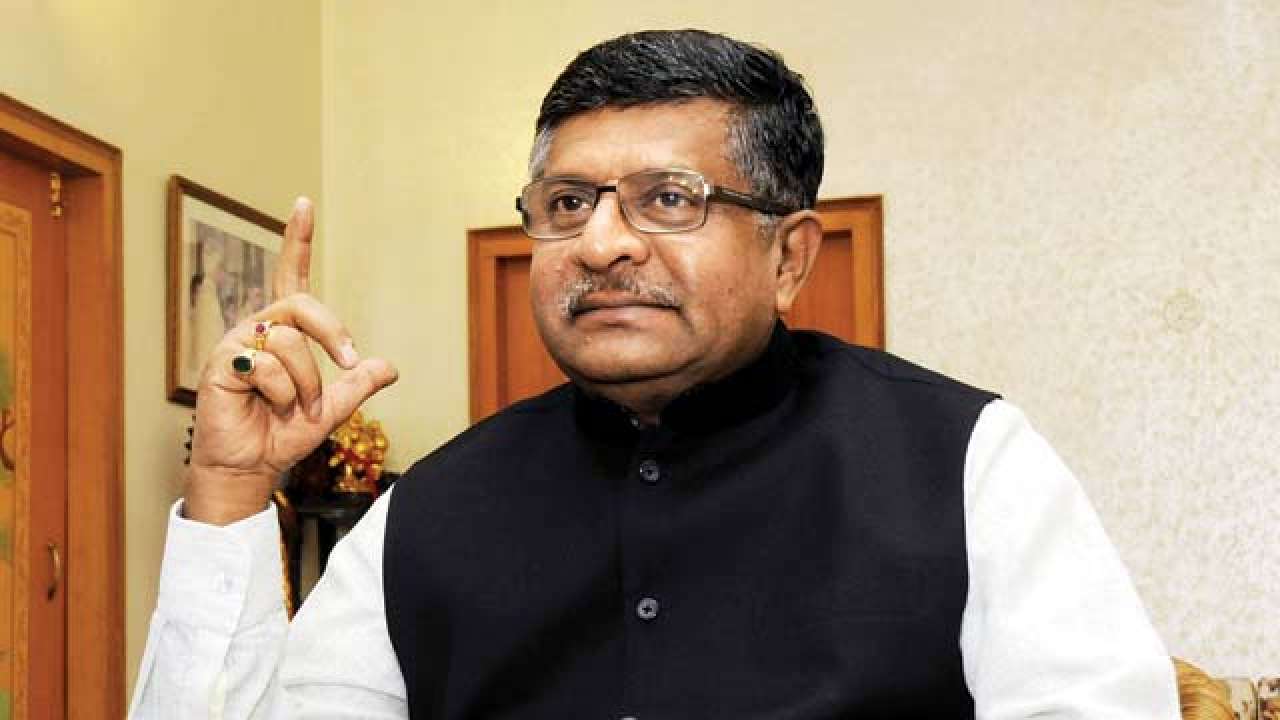
In an interview with Mansi Taneja, Minister for Electronics and IT Ravi Shankar Prasad talks about how e-governance through Aadhaar helped save Rs 57,000 crore in subsidies and why the rise of domestic manufacturing in India is a great cause for cheer
We expect India's digital economy to achieve $1 trillion in the next five to seven years. This can be achieved easily. In fact, India's digital economy has the potential to grow to $2 trillion besides creating 40-70 lakh jobs in employment over this period. Government programmes such as Make in India, Skill India, Start-up India and Smart Cities will help reach the targets, and sectors such as IT and IT-enabled services, electronic manufacturing, e-commerce, digital payments and cyber security will be crucial in reaching these targets.
It is achievable because the communication industry stands at $150 billion, IT and IT-enabled services stand up to $50 billion, both totalling to $300 billion. Electronic manufacturing in India is worth $100 billion, e-commerce $35 billion. Without including digital payments, the entire digital economy currently has a worth of more than $400 billion. Digital payments will become a $500 billion economy by 2020.
India must come up with technology which is affordable, inclusive and developmental. We have done that through the Prime Minister's Jan Dhan-Yojana programme. For example, we created 28 crore Jan Dhan accounts of the poor that link to Aadhaar. Today, we have 68 crore bank accounts linked with Aadhaar. We have directly started sending subsidies — gas, ration, MNREGA — to bank accounts. Through this, we have saved about Rs 57,000 crore, which used to be pocketed by the middleman. In the Modi government, Rs 100 is being sent and Rs 100 is reaching the villages. Digital governance is good governance, digital delivery is faster delivery.
Aadhaar as a platform is completely safe, secure and respects the privacy of all Indians. That is entirely inbuilt in the Aadhaar Act passed by the Parliament. About 113 crore Indians have Aadhaar and 99 per cent of the adult population of India is on Aadhaar. There is also a robust mechanism under sections 29,30,31 of the law where nobody can share their biometrics for unauthorised use, with due regard to privacy and data concerns. Anybody who tinkers with it will land in jail.
India has come up well in the domestic mobile phone market. Manufacturing of mobile phones which was only six crore units in 2014-15 has reached an estimated 22 crore in 2016-17. In terms of value, there has been 183 per cent jump. In 2014-15, mobile phones worth Rs 19,000 crore were made in India and today an estimated Rs 90,000 crore in 2016-17. About 72 new mobile manufacturing units have come up which has created one lakh new direct jobs and over three lakh indirect jobs.
Not true. There are various other schemes which are going on under our ministry such as MSIPs (Modified Special Incentive Package Scheme) and electronics manufacturing clusters. Under MSIPs, we are offering financial incentives to attract investments. About 269 investment proposals worth Rs 1,56,729 crore (till April 2017) have been received under MSPIs compared to only Rs11,198 crore in May 2014.